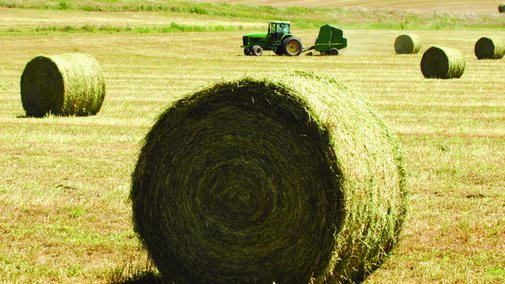Many hay fields have recently been cut and baled for hay. After the final cutting for the year, it may not matter too much if bales are left in the field, but when more harvests are expected from that field, delaying removal can be harmful.
One problem is that plants directly under the bale or stack often are killed if covered for more than a week or two. This may not hurt yield too much, but it makes for a great place for weeds to get started and quickly spread.
Most damage, though, is due to wheel traffic on the regrowth. Studies have shown that when fields are dry, plants driven on right after harvest and before regrowth occurs will yield about 5-7% less at the next cutting; however, it gets much worse if you wait to remove bales. By delaying removal just seven days after cutting, when regrowth shoots had started to grow, yield was reduced over 25% and fewer plants survived.
Worse yet is removing bales when fields are wet. Wheel traffic will cause much more compaction and yield loss exceeding 30%.
These studies emphasized the benefits of baling and removing bales from hay fields as quickly as possible after cutting as well as minimizing driving on wet soils. They also suggest that following the same wheel track when removing bales or stacks from fields can reduce losses from wheel tracks by limiting the total area damaged.
Hay fields must be driven on, of course, to remove bales after harvest, but you can lessen damage and future yield loss by controlling where, when and how often you drive.

